- Human Sacrifice and the Heart
- In order to keep the sun moving across the sky
- to enable them to survive
- Aztecs had to feed Huitzilopochtli with
- human hearts and blood.
-
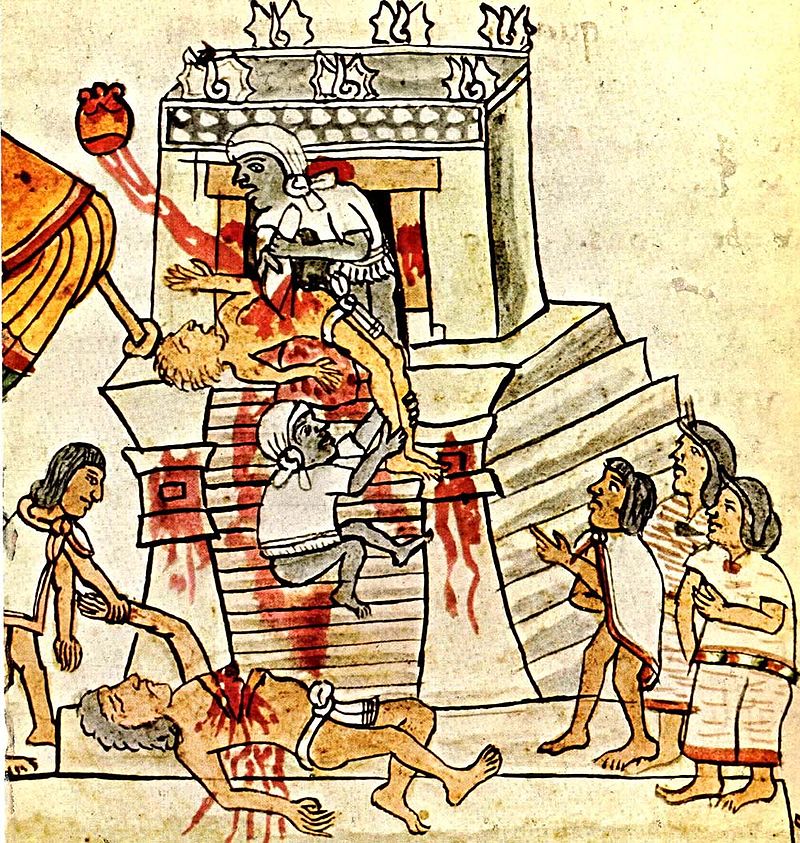
Human sacrifice as shown in the Codex Magliabechiano, Folio 70. Heart-extraction was viewed as a means of liberating the Istli and reuniting it with the Sun: the victim’s transformed heart flies Sun-ward on a trail of blood.
Wiki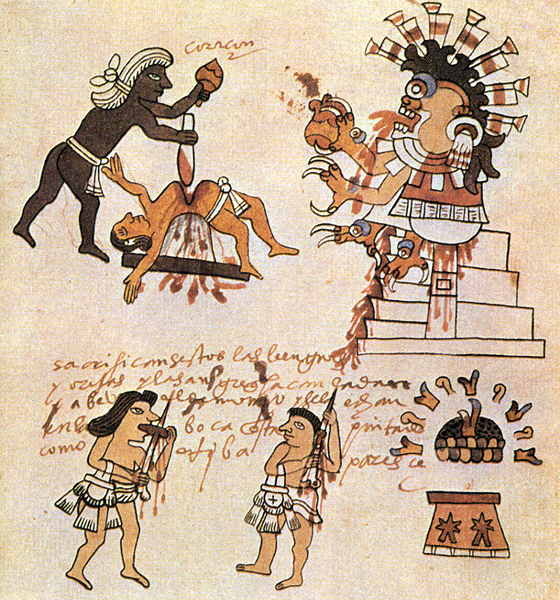
Aztec Culture
Codex Tudela.
Heart-extraction was viewed as a means of liberating the Istli and reuniting it with the Sun: the victim’s transformed heart flies
Also shown is human cannibalsim as part of the ritual
Wiki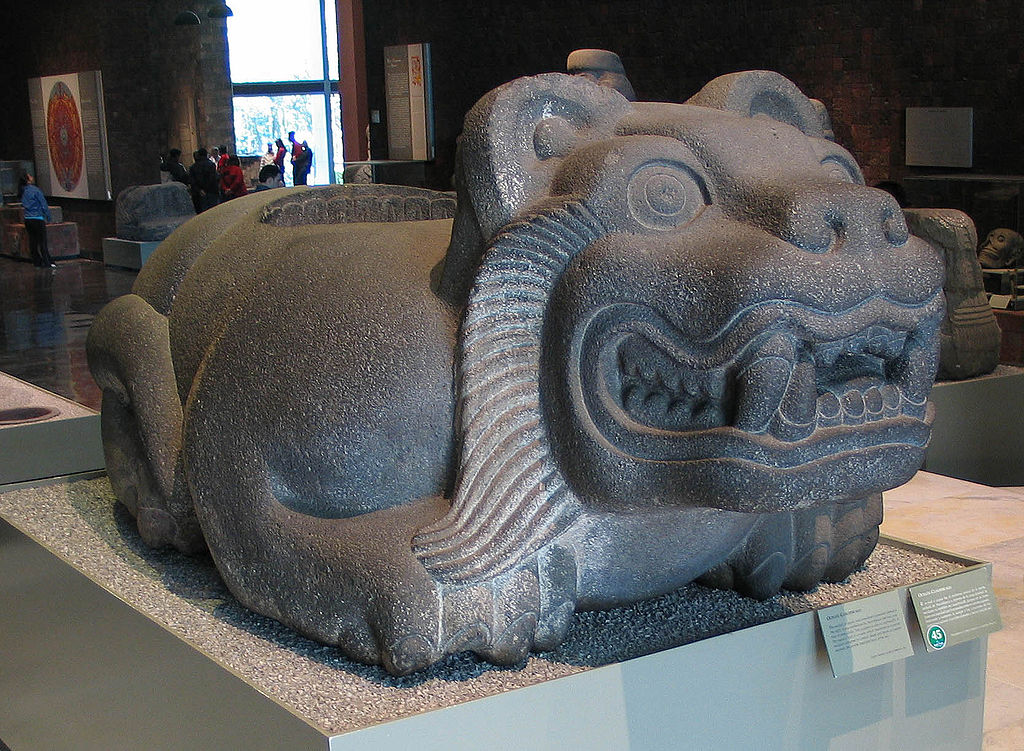
A jaguar-shaped cuauhxicalli in the National Museum of Anthropology. This altar-like stone vessel was used to hold the hearts of sacrificial victims. See also chacmool.
Ocelotl-Cuauhxicalli (mexica room of the National Museum of Anthropology of Mexico City).
Luidger – Own work
Wiki - Skulls
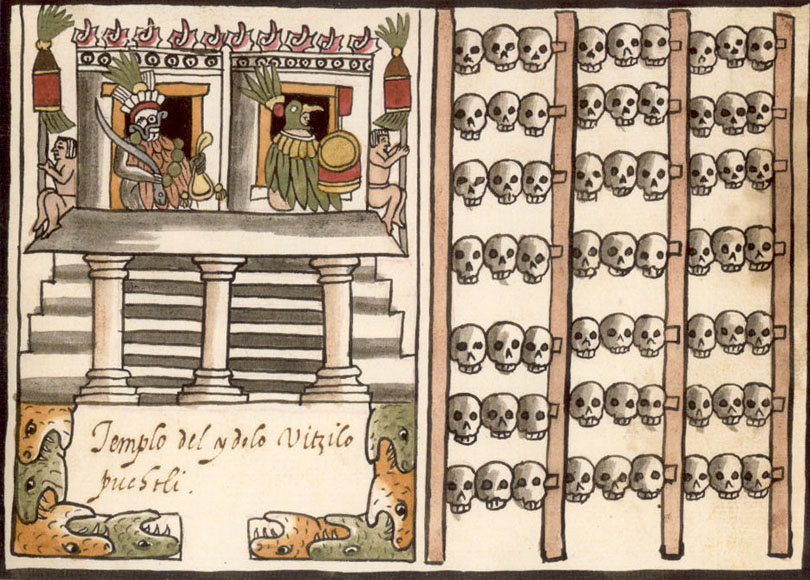
Depiction of a tzompantli (“skull rack”), right half of image; associated with the depiction of Aztec temple dedicated to the deity Huitzilopochtli. From the 1587 Aztec manuscript, the Codex Tovar. Description from World Digital Library: “This illustration, from the second section, shows (at left) a temple or pyramid surmounted by the images of two gods flanked by native Mexicans. On the temple is an image of Huitzilopochtli on the right, and an image of Tlaloc holding a turquoise serpent is on the left. The temple is surrounded by a wall of serpents swallowing one another’s heads. At right is a tzompantli (Aztec skull rack). Huitzilopochtli, whose name means “Blue hummingbird on the left,” was the Aztec god of the sun and war. The xiuhcoatl (turquoise or fire serpent) was his mystical weapon. Tlaloc, the god of rain and agriculture, was of pre-Aztec, or Toltec, origin. A coatepantli (wall made of sculpted serpents) often surrounds Aztec temples. The tzompantli would hold the skulls of sacrificial victims. The great temple at Tenochtitlan was surmounted by two sanctuaries—the one on the left dedicated to Tlaloc, the one on the right to Huitzilopochtli.”
Juan de Tovar – John Carter Brown Library
Wiki
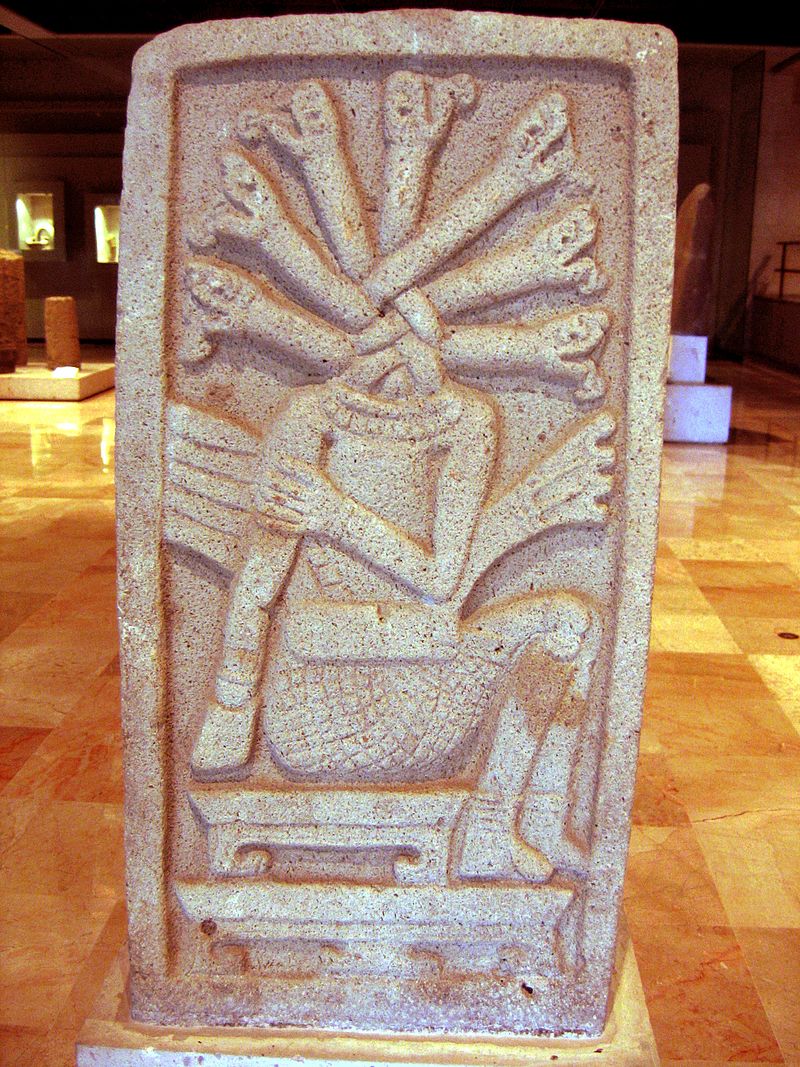
Decapitated ball player.
Wiki
- Balance of Life
- body contained a balance of three separate entities or souls:
- the tonalli
- located in the upper part of the head
- connected to a higher power,
- associated with the disease of “soul loss”
- the teyolia,
- located in the heart
- stood for a person’s knowledge and memory
- the ihiyotl.
- resided in the liver,
- associated with witchcraft and the supernatural
- could also leave the body
- but was always connected through
- the wind or an
- individual’s breath, “…
- ie by breathing on other people
- could affect others
- but was always connected through
- Balance of the three entities (head heart and liver)
- affected the health and life of a person
- the tonalli
- body contained a balance of three separate entities or souls:
- Gods responsible for diseases
- Tlaloc, the water god, was responsible for sickness related to wet and cold, such as
- rheumatic ailments
- Xipe Totec, responsible for
- skin eruptions and
- Tlaloc, the water god, was responsible for sickness related to wet and cold, such as
Links and References
-
- Wiki
- TCV
- Culture Aztec
- Culture and Anatomy
- Culture and Art
- Culture and Disease and Medicine
- Culture and Music
- Signs and Symbols
- TCV Map of Cultures of the World